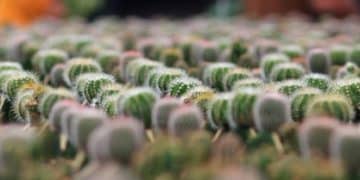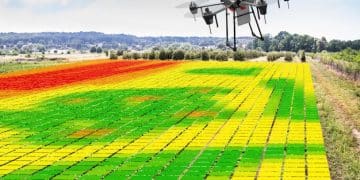Discover the Latest Innovations in Precision Agriculture for Sustainable Resource Management
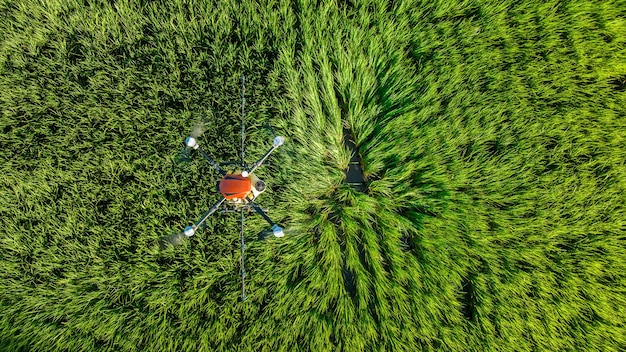
Discover the Latest Innovations in Precision Agriculture for Sustainable Resource Management and how it utilizes cutting-edge technologies to optimize resource use, enhance crop yields, and promote sustainable farming practices for a more environmentally conscious and efficient agricultural sector.
Discover the Latest Innovations in Precision Agriculture for Sustainable Resource Management, a revolutionary approach transforming modern farming. By integrating advanced technologies, we can optimize resource use, minimize environmental impact, and ensure food security for future generations.
Understanding Precision Agriculture
Precision agriculture represents a paradigm shift in farming practices. It’s about moving away from uniform treatments and embracing tailored strategies that cater to the specific needs of different areas within a field.
This approach leverages data-driven insights and cutting-edge technologies to optimize resource allocation and improve crop yields while minimizing waste and environmental impact.
What is Precision Agriculture?
Precision agriculture, also known as smart farming, is a management concept based on observing, measuring, and responding to inter and intra-field variability in crops. This involves using technologies like GPS, sensors, drones, and data analytics to make informed decisions about planting, irrigation, fertilization, and pest control.
Key Principles of Precision Agriculture
The core principles of precision agriculture revolve around data collection, analysis, and targeted action. Here’s a closer look:
- Data Collection: Gathering real-time information about soil conditions, weather patterns, and crop health using various sensors and monitoring devices.
- Data Analysis: Processing and interpreting the collected data to identify patterns, trends, and areas that require specific attention.
- Targeted Action: Implementing customized strategies based on data insights, such as variable-rate fertilization, targeted irrigation, and precise pest control measures.
By adhering to these principles, farmers can optimize resource use, reduce costs, and enhance the sustainability of their operations.
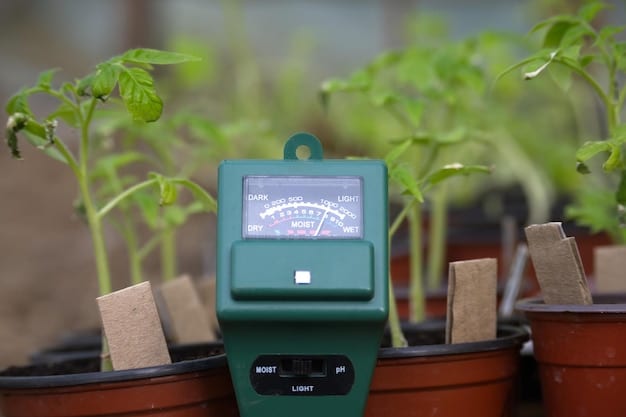
In conclusion, precision agriculture is not just about technology; it’s about adopting a holistic approach that combines technology, data, and sustainable practices to create a more efficient and environmentally friendly farming system.
The Role of GPS and GIS in Precision Farming
Global Positioning System (GPS) and Geographic Information System (GIS) technologies are fundamental components of precision agriculture. They provide the spatial accuracy and data management capabilities necessary for effective decision-making.
These technologies enable farmers to map their fields, track equipment, and analyze data in a spatially explicit manner, leading to more precise and efficient farming practices.
GPS for Accurate Navigation and Mapping
GPS technology allows farmers to navigate fields with high precision, ensuring accurate placement of seeds, fertilizers, and pesticides. It also enables the creation of detailed field maps that capture variations in soil types, elevation, and crop health.
GIS for Data Integration and Analysis
GIS software integrates various data layers, such as soil maps, yield data, and satellite imagery, into a single platform. This allows farmers to analyze spatial relationships and make informed decisions about resource management.
Here are some benefits of using GPS and GIS in precision farming:
- Improved Accuracy: Precise navigation and mapping reduce errors and ensure consistent application of inputs.
- Enhanced Efficiency: Data-driven decision-making optimizes resource allocation and minimizes waste.
- Better Record-Keeping: Detailed field maps and data records facilitate traceability and compliance with regulations.
The combined use of GPS and GIS empowers farmers to manage their operations with greater precision and efficiency, leading to improved productivity and sustainability.
In summary, GPS and GIS technologies are indispensable tools for precision agriculture, providing the spatial framework and data management capabilities needed for effective decision-making.
Remote Sensing and Drones in Agriculture
Remote sensing technologies, particularly drones and satellite imagery, are revolutionizing agriculture by providing farmers with a bird’s-eye view of their fields. These tools enable the detection of crop stress, identification of pest infestations, and assessment of overall crop health.
By leveraging remote sensing data, farmers can make timely interventions and optimize resource allocation, leading to improved yields and reduced environmental impact.
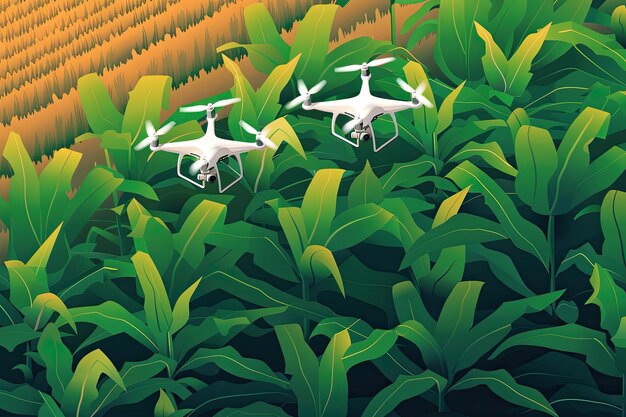
Benefits of Using Drones in Agriculture
Drones equipped with multispectral cameras can capture high-resolution images of fields, providing valuable insights into crop health and vigor. These images can be used to create vegetation indices, such as NDVI (Normalized Difference Vegetation Index), which indicate the relative health of plants.
Applications of Remote Sensing in Agriculture
Remote sensing data can be used for a variety of applications, including:
- Crop Monitoring: Detecting early signs of stress, disease, or nutrient deficiencies.
- Yield Prediction: Estimating crop yields based on vegetation indices and other data.
- Irrigation Management: Identifying areas that require more or less water.
- Pest and Disease Detection: Pinpointing areas of infestation or infection for targeted treatment.
Remote sensing and drones are transforming agriculture by providing farmers with timely and actionable information, enabling them to make informed decisions and optimize resource management.
In essence, remote sensing and drone technologies offer a powerful toolset for precision agriculture, enabling farmers to monitor their crops with unparalleled detail and precision.
The Impact of IoT and Sensor Technologies
The Internet of Things (IoT) and sensor technologies are playing an increasingly important role in precision agriculture. These technologies enable the collection of real-time data on various parameters, such as soil moisture, temperature, humidity, and nutrient levels.
By integrating IoT sensors into their operations, farmers can gain a deeper understanding of their fields and make data-driven decisions that optimize resource use and improve crop yields.
Types of Sensors Used in Agriculture
Various types of sensors are used in precision agriculture, each providing valuable information about different aspects of the farming environment. Some common types include:
- Soil Moisture Sensors: Measuring the water content of the soil to optimize irrigation scheduling.
- Temperature Sensors: Monitoring air and soil temperatures to assess crop health and predict growth rates.
- Nutrient Sensors: Detecting nutrient levels in the soil to optimize fertilization strategies.
How IoT Enhances Data Collection and Analysis
IoT devices can transmit sensor data wirelessly to a central platform, where it can be analyzed and visualized. This allows farmers to monitor their fields remotely and receive alerts when conditions deviate from optimal levels.
The integration of IoT and sensor technologies enables farmers to make more informed decisions, reduce waste, and improve the sustainability of their operations.
To summarize, IoT and sensor technologies are revolutionizing precision agriculture by providing farmers with real-time data and actionable insights, enabling them to optimize resource management and improve crop yields.
Data Analytics and Machine Learning in Agriculture
Data analytics and machine learning are essential components of precision agriculture, enabling farmers to extract valuable insights from the vast amounts of data generated by sensors, drones, and other technologies.
By applying advanced analytical techniques, farmers can identify patterns, predict outcomes, and make data-driven decisions that optimize resource use and improve crop yields.
The Power of Data Analytics in Agriculture
Data analytics involves the process of examining raw data to uncover patterns, trends, and relationships. In agriculture, this can include analyzing yield data, soil data, weather data, and other relevant information.
Applications of Machine Learning in Agriculture
Machine learning algorithms can be trained to predict crop yields, detect diseases, and optimize irrigation schedules. These algorithms can also be used to develop predictive models that help farmers anticipate potential problems and take proactive measures.
Data analytics and machine learning are empowering farmers to make more informed decisions, reduce risks, and improve the sustainability of their operations. Embracing these technologies ensures a future where agriculture is more predictable, efficient, and environmentally responsible.
In short, data analytics and machine learning are transforming precision agriculture by providing farmers with the tools they need to make data-driven decisions and optimize resource management.
Sustainable Resource Management Practices
Sustainable resource management is at the heart of precision agriculture. By optimizing the use of inputs such as water, fertilizers, and pesticides, farmers can minimize environmental impact and ensure the long-term health of their land.
Precision agriculture enables farmers to adopt sustainable practices that promote biodiversity, reduce pollution, and conserve natural resources.
Water Management Strategies
Precision irrigation techniques, such as drip irrigation and variable-rate irrigation, deliver water directly to plant roots, minimizing water loss through evaporation and runoff. Soil moisture sensors and weather data can be used to optimize irrigation schedules and prevent overwatering.
Fertilizer Optimization Techniques
Variable-rate fertilization involves applying fertilizers at different rates across a field, based on soil nutrient levels and crop needs. This reduces the risk of nutrient runoff and minimizes the environmental impact of fertilizer use.
Implementing sustainable practices is crucial for the long-term viability of agriculture. By embracing precision agriculture, farmers can optimize resource use, minimize environmental impact, and ensure food security for future generations. This holistic approach contributes to a more resilient and sustainable agricultural system.
In summary, precision agriculture plays a vital role in promoting sustainable resource management by enabling farmers to optimize the use of inputs and minimize environmental impact.
| Key Point | Brief Description |
|---|---|
| 🌱 GPS and GIS | Enable precise navigation and spatial data analysis. |
| 📱 Drones and Sensors | Provide real-time crop monitoring and data collection. |
| 📊 Data Analytics | Improve decision-making through pattern identification and prediction. |
| 💧 Water Management | Optimizes water use with precise irrigation techniques. |
Frequently Asked Questions
▼
The main goal is to optimize resource utilization while minimizing environmental impact. It aims to increase crop yield and quality through data-driven decisions and precise application of inputs.
▼
Drones equipped with multispectral cameras provide detailed crop health assessments. This enables early detection of stress or diseases, leading to targeted interventions and reduced pesticide use.
▼
Data analytics transforms raw agricultural data into actionable insights. By identifying patterns and predicting outcomes, farmers can make data-driven decisions to optimize resources and improve yields.
▼
Sensors monitor soil moisture levels in real-time, allowing farmers to irrigate only when and where necessary. This prevents overwatering, conserves water, and ensures optimal crop hydration.
▼
By optimizing inputs like water and fertilizers, precision agriculture reduces waste and minimizes the environmental impact of farming. It promotes soil health and reduces pollution, contributing to more sustainable practices.
Conclusion
In conclusion, Discover the Latest Innovations in Precision Agriculture for Sustainable Resource Management offers a pathway towards a more efficient, environmentally friendly, and sustainable agricultural sector. By embracing these technologies, farmers can optimize resource use, minimize environmental impact, and ensure food security for future generations, paving the way for a more resilient and thriving agricultural landscape.



